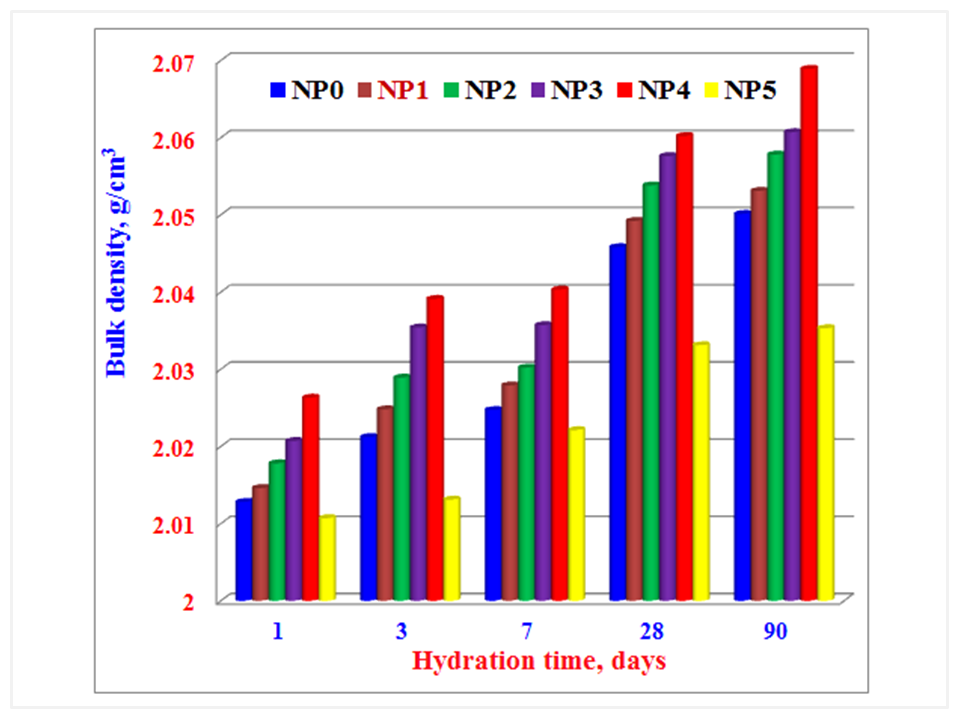Title
Low Heat Blended Cements Containing Nanosized Particles of Natural Pumice Alone or in Combination with Granulated Blast Furnace Slag
Authors
H. H. M. Darweesh
Refractories, Ceramics and Building Materials Department, National Research Centre, Cairo, Egypt
*Corresponding author E-mail address: hassandarweesh2000@yahoo.com (H. H. M. Darweesh)
Article History
Publication details: Received: 16th March 2021; Revised: 13th April 2021; Accepted: 13th April 2021; Published: 20th April 2021
Cite this article
Darweesh H. H. M. Low Heat Blended Cements Containing Nanosized Particles of Natural Pumice Alone or in Combination with Granulated Blast Furnace Slag. Nano Prog., 2021, 3(5), 38-46.

Abstract
The heat of hydration, water of consistency, setting times, free lime and bound water contents, density, porosity and the compressive strength development of the various blended cements containing the natural pumice (NP) and/or granulated blast furnace slag (GbfS) have been experimentally investigated. There are two groups of blended cements were prepared. The first was containing NP alone, while the second was containing both NP and GbfS. The results proved the w/c ratio as well as setting times increased as the NP and/or GbfS contents increased. The bound water contents, density and compressive strength increased as NP or NP with GbfS contents increased, only up to 20 wt. % NP (P4) in the first group, and up to equal amounts of both NP and GbfS (PS4) in the second, and then decreased with further increase. Contrary, the apparent porosity gradually decreased, and then increased. The free lime content of the blank cement increased with hydration time continuously. In presence of NP, the free lime content reduced gradually up to 90 days, while in combination of GbfS, the free lime content at first enhanced up to 3 days of hydration, and then decreased onward. So, both NP and GbfS acted as pozzolanic materials. Moreover, the NP and GbfS could be reduced the heat of hydration of all blended cement pastes when compared to that of the blank. The values of the heat of hydration of Group II were slightly lower than those of the first. Also, the heat of hydration reduced more with increasing the NP and/or GbfS ratios.
Keywords
Blended cements; NP, GbfS; consistency; setting times; density; strength; heat of hydration